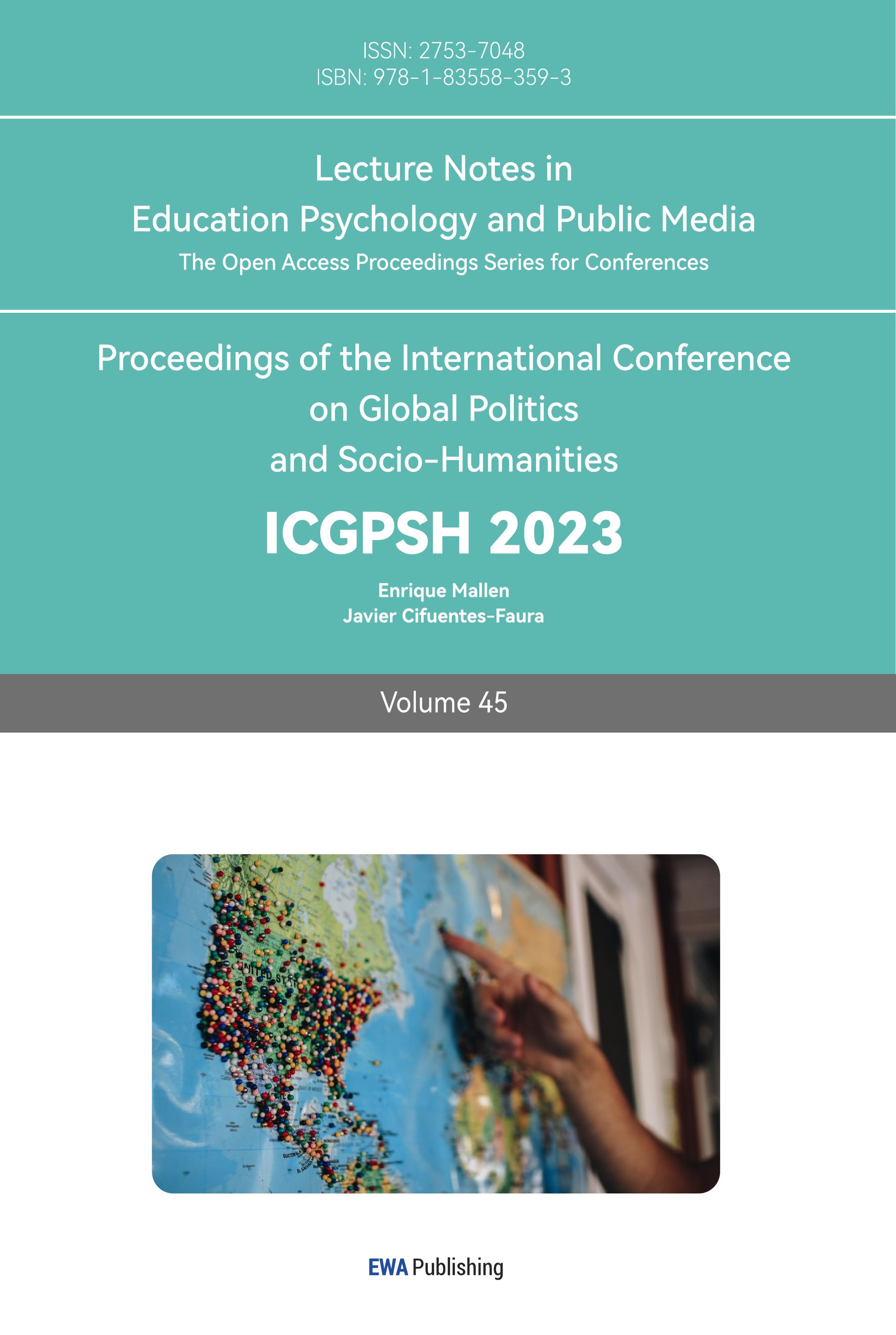1. Introduction
Intellectual technology plays an important role in the educational field. Nowadays, the field of education praises a teaching method that use digital resources in curricula and students’ daily learning [1]. Digital resource for education has been one of the symbols to evaluate the current educational resources. However, because of economic imbalanced development between urban areas and rural areas, students in different regions and families have different conditions of digital resource using. Is it really a good reformation for students? As a result of imbalanced development, the educational gap caused by the digital divide has become a serious problem. Especially in China, the condition of the problems is grim. Its influence extended to many aspects of society [2].
This paper through the digital divide of digital resources applied in Chinese education to discuss the urban-rural gap to show Chinese educational inequality. This research to find out the core reasons of Chinese educational inequality. The first section is to introduce the current situation of educational gap in China and the paper will examine the real problems with some data. The second section analyzes the subjective factors and objective factors causing the Chinese educational gap. In the end, the overall goal of the article is presented by pointing out some solutions to deal with the problem put forward in the above paragraphs. Hence, the value of dealing with these problems will be clear in the end.
2. Literature Review
With the boom of the development of digital education, there are many new conditions caused by digital technology. The literature review focuses on the “Digital divide in China”, “Educational gap,” and “Unequal Distribution of Educational Resources” to demonstrate.
2.1. Digital Divide in China
As far as we all know, Chinese intelligent development is very prosperous. Since the Chinese revolution happened in 1978, the Chinese have had a new era, especially in the 21st century, “intelligence” has been an adjective describing Chinese society. Technology has already been applied in most of aspects in Chinese society.
“Digital divide” means that in the process of global digitization, different countries, regions, industries, enterprises, and communities, the information gap, and the tendency to further polarize the rich and the poor due to differences in the degree of ownership, application and innovation of Information and network technologies. When the digital divide happens, a teaching method of digital resources applied in education is not any more an absolutely beneficial method for students.
2.2. Educational Gap
The educational gap is a phenomenon caused by educational resources. It is a combination of difficult factors. Particularly giving expressions in migrant children because they face so many decisions in education and they usually can’t accept good and coherent education [3]. At the same time, the educational condition of rural children is serious because of the gap between the poor and the rich and the environment.
In the new era, digital technology has already taken the place of traditional operations. Some causes in digital reasons reflect on many views. Teachers have different perceptions of digital divide, some of them are happy to discuss it, but some of them don’t understand it [4]. In the team of teachers, they have different abilities and acceptability to use digital devices in the teaching process. Because of the difference of gender, men and women have different abilities to use digital resources to learn. It makes gender [5]. The digital divide also widens the income gap in education between China’s regions [6]. The digital divide can be regarded as a catalyst for the educational gap because of its strong ability to provide study resources.
2.3. Unequal Distribution of Educational Resources
The major challenge of most schools is inadequate educational resources despite a conscious effort to constantly provide resources [7]. Educational resource is extremely important for fostering of students’ ability and their grades [8]. It includes the teams of teachers, the academic resources in the corpus, the device of teaching and learning, the cultural environment of study, and so on. However, there is a phenomenon that educational resources are distributed unequally.
The factors of it are various: The gap between poor and rich, the gap between different regions, the inner school gap, the teachers’ reasons, unfair in educational systems, and so on [9]. But in my view, the reason of it is not only in the objective aspect but also in the subjective aspects. The objective is the core reason, and the subjective is the important reason. Furthermore, the subjective promotes the objective. The objective cause is the internal cause of subjective cause.
To deal with it, the most widely discussion is the open educational resources (OER). Some researchers advocate co-create open educational resources and have a positive view of it, but some researchers suppose the OER is not a definite solution to deal with it [10]. For the other advocations, there are also some valuable points. To narrow the scope of OER, someone advocates the blockchain within higher educational information resource sharing [11]. But this point just adopted in institutions of higher learning, and it also can’t be a definite solution to resolve the unequal distribution of educational resources. May it can narrow the gap between the different universities.
3. Methodology
Since educational methods were changed to be more digitized, educational equality has also had new challenges. It has been necessary matter to introspect the educational gap and clear the objective reasons and subjective reasons of it. In this paper, it shows some figures to demonstrate the real objective subjective gap between Chinese regions. By some formal statistical analysis, this paper gives some further research to examine the specific effects of these factors. The research data comes from the official website of the Ministry of Education of the People’s Republic of China, the CNNIC of Research Report on Internet Usage among Minors in China in 2020 and the Statistical Yearbook Sharing Platform of www.yearbookchina.com
4. Results
The distribution of Chinese educational digital resources has a regional divide, and it leads to a regional educational gap. Rural minors have a more limited range of electronic devices, and they are inclined to use electronic devices to entertain themselves.
4.1. The Study Data
Currently, China's unequal distribution of educational digital resources is obvious (see Figure 1). As we all know, Beijing is the capital of China. Obviously, its educational digital resources are abundant.
Compared with a province that has average educational resources in China (Hubei), except network multimedia classrooms, Beijing as only a city is also cutting-edge. The other two provinces in the chart, all have a long distance from Beijing. Especially in Tibet, which is away from the Chinese center of economy and politics, just has a little digital resource in education.
In China, On the one hand, the imbalance of educational resources leads to a huge gap, not only between urban and rural areas but also between different regions of the same city, like a “Chain of contempt,” in which groups of people from different classes think, feel, and behave very differently, like people from different places.
When a mother who came to Beijing from the countryside to work as a housekeeper had to go back to her hometown because of her child’s school problems, she envied her employers’ children for having the right to go to school in the city, but she didn’t know or understand that mothers in the city were collectively anxious about school districts When middle-class parents in the city crazily apply for the Cambridge English Test, Beijing fails to register and goes to other cities to apply for the test. When they take a trip, parents in the countryside have never heard of the test at all, it is impossible to imagine a lifestyle of “Traveling” for a test, and when the parents of the Xicheng and Haidian districts argue with each other, the onlookers self-ridicule “Haidian district compete, children, Xicheng district compete, parents, other areas compete in the app of temu.”, behind the jokes is a portrait of Beijing’s educational landscape -- where the rest of the world simply doesn’t have the capital to compete. Nearly in everywhere, the educational gap is a definite reason and a definite result of societies.
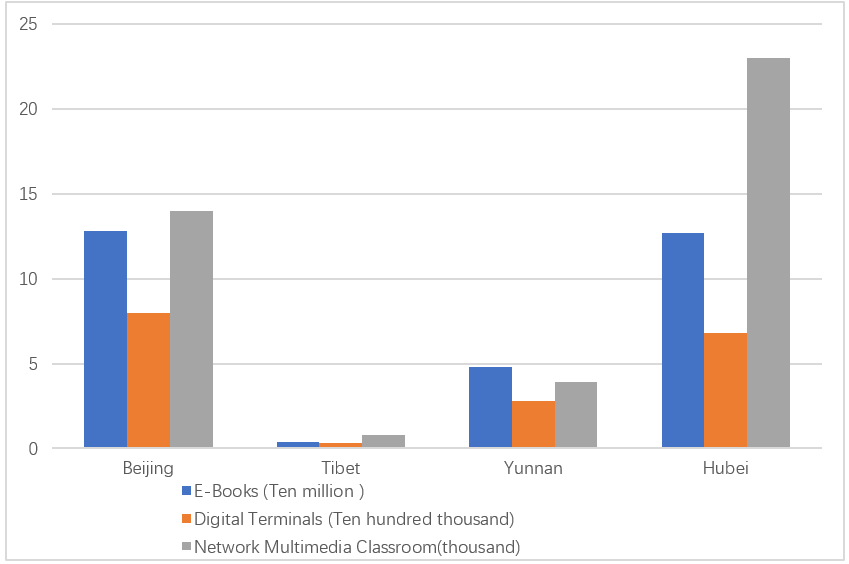
Figure 1: The distribution of Chinese educational digital resources within different regions (2021)
In Figure 2, it is obvious that the percentage of illiterate has a great disparity between the different regions in China. Beijing is a place that has the lowest percentage of illiterate, which is a contrast with Tibet, which has the highest percentage of illiterate. The percentage of Hubei is also higher than the percentage of Beijing but lower than the percentage of Yunnan.
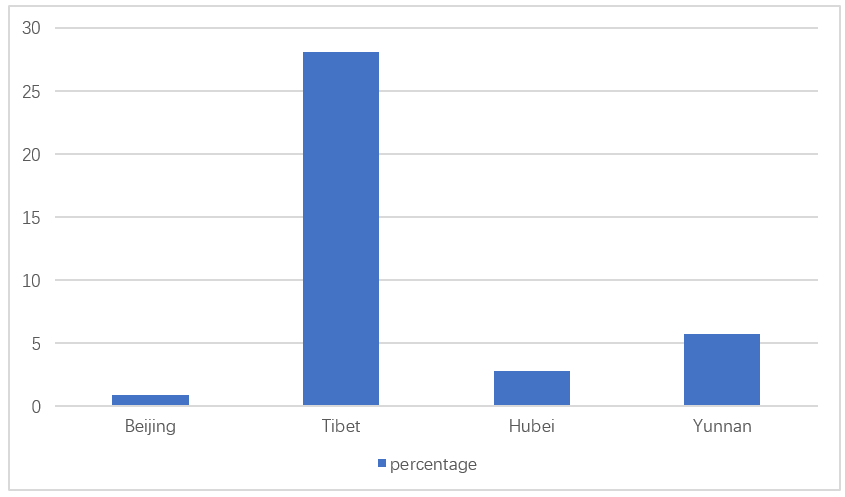
Figure 2: The percentage of illiterate in Chinese regions (2020)
Figure 3 conveys information that only the percentage of use of mobile phones is rural higher. Tablet, dictionary pen, desktop computer, and laptop penetration are higher in towns than in the countryside. Especially in the penetration of dictionary pens, the disparity is vast.
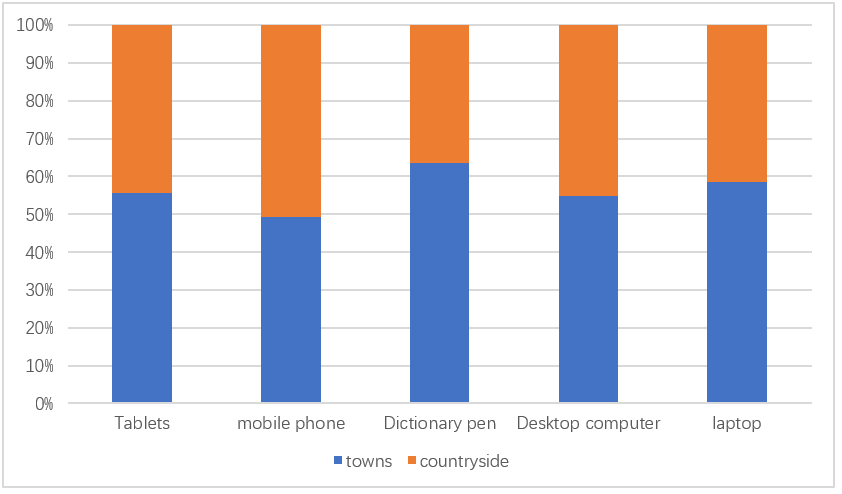
Figure 3: Use of Internet equipment by urban and rural minors
Figure 4 shows us the percentage of minors in China who use devices to play games. As you can see, more minors choose mobile phones to play games.
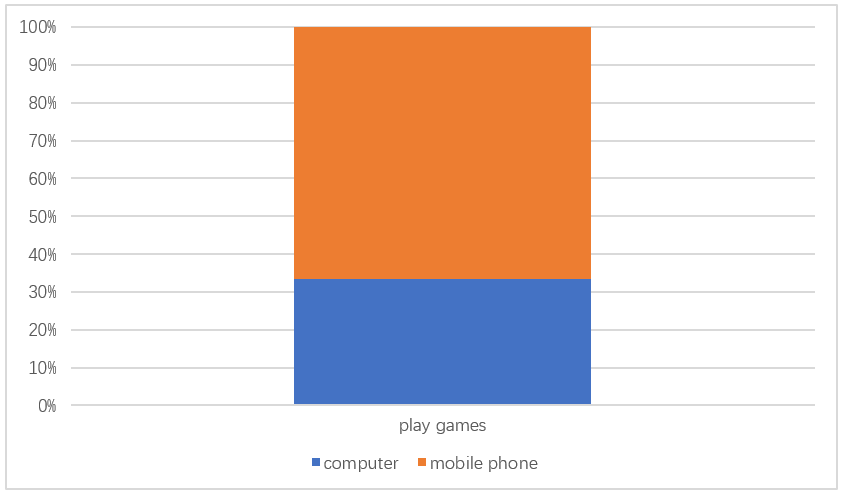
Figure 4: Percentage of minors using different devices to play games
4.2. The Data Analysis
In Figure 1, through the contrasts with some digital capital in Chinese different regions, it is obvious that there is a vast disparity in Chinese educational digital resources. Because the world has already entered the stage of the digital era, the effects of digital resources become greater and greater. Hence, its effects for education become more and more special and important. In Figure 2, the methodology conveys that the ratio of illiterate has the same trend as in Figure 1. It conveys which one has more educational resources and which one has a lower ratio of illiterate. So, the educational gap caused by digital resources distributed unequally becomes more serious. As a necessary way to possess digital resources, the Proportion of ownership of digital devices is important to research.
In Figure 3, it seems that the mobile phone is special because only its ratio of the countryside exceeds towns. Connecting with the information from Figure 4 that more percentage choose mobile phones to play games, a reason that more rural minors use digital devices to play games shows up. The 2021 National Internet for Minors Usage Research Report of CNNIC, it also has a clear conclusion that the proportion of rural minors using electronic devices for entertainment is six percent higher than that in cities. Hence, urban minors have more diversified and functional electronic devices than rural minors.
5. Discussion
The selection introduces the subjective and objective reasons of the educational gap in China and the connection between them. You will discover why the educational gap is still serious even if the government has already taken steps to deal with it. Next, the section will propose some suggestions and measures to solve it. This paper may help people know how to pursue real educational equality and government to prove the politics of education.
5.1. Operational Problems
By the objective aspect, educational resource is the basis of education. So, how to get resources is valuable to discuss. For the specific condition of Chinese society. How to get educational resources usually depends on your family. It can be divided to economic capital, social capital, and cultural capital. Researchers supposed cultural capital is most important [12]. As we all know, a family’s cultural capital always needs a good educational level from the parents and strong economic strength from the family’s background. So, cruelly, the way to get educational resources is money. That’s why the poor usually can’t get a good education in China. With the above figures, the disparity between the poor and the rich not only reflects on different families but also reflects on the different regions in China. The problems, especially in the urban and rural areas, is most significant [13].
By a subjective aspect, rural minors trend to use electronic device to entertain themselves. One of the important reasons is the left-behind children in the Chinese countryside. The part of children is lack of the limited by their parents and they need to communicate with their parents through mobile phone. However, they are too young to request themselves strictly. They are easy to develop a sense of dependence on mobile phones and excessive entertainment through mobile phones.
The situation of the part of rural children that their parents stay with them isn’t batter. As a result of the education rate of the previous generation was very low, usually their parents can’t give them appropriate direction. But the Families’ education is very significant for children, especially in the aspect of psychology [14]. Hence, rural children’s study habits and motivations will be behind the children of the city. Motivation and confidence are to be regarded to important factors to a person to finish event [15]. Because of that, rural students may have a generous educational gap with urban students.
5.2. The Connection Between the Subjective and the Objective
The subjective reasons, just like a heavy shot put slow down the pace of educational equity, which also aggravates the severity of objective causes. The objective cause is the internal cause of the subjective cause. In some remote rural areas of China, the parents always want their children to work early to reduce the economic pressure of the family, and they usually think the girl doesn’t need to get a better education [16]. So, most of this part of children can’t find the appropriate road of their life can’t make a difference, and can’t change their lives. This kind of connection just like a cycle that makes the current situation of education is difficult to change.
5.3. Solution
First, the necessary thing which needs to do is to find a way to break the solid cycle and discover the crevice of a vicious cycle. There are two aspects to think about. One is to vigorously develop the economy to let everybody have the same opportunity to accept education, like in Finland. The other is to change the basic thinking of the parents of a family that encourages unfair education. Obviously, the first way is too hard to achieve in a country with an enormous population. So, if we hope to change it in a short time, the second way may be more wisely. Hence, to solve the problem, the government to organize educational activities at the grass-roots level for the parents. Education is not only the responsibility of teachers and schools, but also the responsibility of parents and society is what needs to be cleared.
The second to improve the overall quality of teachers. There are still many teachers are lack educational attainment in the place developing behind other places, which leads to many problems on the guidance of students. Society must be clear that teachers are not only just a person who is well versed in the subject matter but also a person to gives lifelong directions to students.
Third, the government should give the same level to schools in the countryside and towns and improve the support facilities of schools. To avoid the basic education equality between countryside and towns. Don’t let the school have a ridiculous disparity in infrastructure construction.
Fourth, in the view of politics, it’s time to introspect our educational politics, especially in the college entrance examination system. The politics of the grades of one test to decide everything is a scientific politic for selecting excellent students. This kind of competence system, which only depends on test scores, aggravated the gap. If the government doesn’t change fundamental politics, any other solutions in politics can’t solve the difficulty absolutely.
6. Conclusion
The educational gap has been a hotly debated topic in academia in recent decades and has been a public discussion and reflection. Up to now, the causes and measures of the education gap have been discussed for a long time. Because of the maturity of digital technology, digital resources play a more and more important role in educational resources. So, through some significant information of digital resources of education, researching the condition of the Chinese educational gap can be an effective way. Based on the above data, some important conclusions have been drawn. First, for the object reason, the unequal distribution of educational digital resources leads to a regional educational gap in a great measure. Second, for the subjective reason, the rural minors have less motivation or mental condition to study with digital devices. Hence, the paper researches the connection between the subjective and objective to find an effective way to narrow the educational gap in China, which is to break the vicious circle between the subjective and objective. At the same time, four solutions to solve specific problems are proposed.
With the development of Chat GPT, its function for education is greater and greater. But how to use these superior-quality digital resources to develop education and avoid aggravating the educational gap is a topic that needs to be studied in the future. A widely discussed topic – OER, which is an ideal idea to solve the educational gap. However, its feasibility needs to be more studied. For example, the copyright of academic resources is a barrier to applying to educational resources. What’s more, the OER needs an economic basis around the world, so how to solve the economic barrier? There needs to be further research on OER to put this concept into practice. The educational gap is a worldwide problem which needs everyone to work together to solve it. It is widely believed that the educational divide will disappear in the world in one day.
References
[1]. Palshkova, I., Bidyuk, D., Balalaieva, O., Shynkaruk, O., & Karhut, V. (2023). The use of digital resources in the education system of foreign countries. Revista Eduweb, 17(3), 245-256. https://doi.org/10.46502/issn.1856-7576/2023.17.03.21
[2]. Chen L, Huang C, The digital divide in the Internet age, 2015, (07),33-37 https://doi.org/10.16017/j.cnki.xwahz.2015.07.008
[3]. Xiaobing Wang, Renfu Luo, Linxiu Zhang & Scott Rozelle (2017) The Education Gap of China’s Migrant Children and Rural Counterparts, The Journal of Development Studies, 53:11, 1865-1881, https://doi.org/10.1080/00220388.2016.1274395
[4]. Giavrimis, P. (2023). The digital divide: Greek primary teachers’ conceptualizations. Journal of Digital Educational Technology, 3(2). https://doi.org/10.30935/jdet/13350
[5]. JACKSON L, ZHAO Y, et al. Race, gender and information technology use: the new digital divide[J]. Cyber psychology&behavior,2008, 11(4):437-442.https://doi.org/10.1089/cpb.2007.0157
[6]. Qiu Y, He N, Yan C, Rao Q (2023), Whether the digital divide widens the income gap between China’s regions? PLoS ONE 18(2): e0273334. https://doi.org/10.1371/journal.pone.0273334
[7]. Missah, Y. M., Inusah, F., Ussiph, N., & Frimpong, T. (2023). Evaluating Agile Neural Educational System for Effective Resource Management. https://doi.org/10.21203/rs.3.rs-3224617/v1
[8]. Unnever, J. D., Kerckhoff, A. C., & Robinson, T. J. (2000). District variations in educational resources and student outcomes. Economics of Education Review, 19(3), 245-259. https://doi.org/10.1016/S0272-7757(99)00043-6
[9]. Zhou, N. (2023). Research on Educational Inequality in China. Journal of Education, Humanities and Social Sciences, 17, 116-120. https://doi.org/10.54097/ehss.v17i.10471
[10]. Richter, T., & McPherson, M. (2012). Open educational resources: education for the world?. Distance education, 33(2), 201-219. https://doi.org/10.1080/01587919.2012.692068
[11]. Dai, B., & An, X. (2023). Higher Educational Information Resource Sharing Model Based on Blockchain. International Journal of Emerging Technologies in Learning (Online), 18(7), 72. https://doi.org/10.3991/ijet.v18i07.39241
[12]. Fan, J. B. (2014). The Impact of Economic Capital, Social Capital and Cultural Capital: Chinese Families’ Access to Educational Resources. Sociology Mind, 4, 272-281. http://dx.doi.org/10.4236/sm.2014.44028
[13]. Nie, J. (2023). Analyse on the Current Situation of Educational Inequality in China. Journal of Education, Humanities and Social Sciences, 17, 199-206. https://doi.org/10.54097/ehss.v17i.10493
[14]. Dixon, L., Stewart, B., Burland, J., Delahanty, J., Lucksted, A., & Hoffman, M. (2001). Pilot study of the effectiveness of the family-to-family education program. Psychiatric Services, 52(7), 965-967. https://doi.org/10.1176/appi.ps.52.7.965
[15]. Richter, T., & Adelsberger, H.H. (2011). E-Learning: Education for Everyone? Special Requirements on Learners in Internet-based Learning Environments. In: Proceedings of the World. Conference on Educational Multimedia, Hypermedia and Telecommunications 2011, Chesapeake, VA: AACE, pp. 1598-1604
[16]. Hannum, E., Kong, P., & Zhang, Y. (2009). Family sources of educational gender inequality in rural China: A critical assessment. International journal of educational development, 29(5), 474-486. https://doi.org/10.1016/j.ijedudev.2009.04.007
Cite this article
Zhang,X. (2024). Educational Gap: Unequal Distribution of Educational Resources in China. Lecture Notes in Education Psychology and Public Media,45,194-201.
Data availability
The datasets used and/or analyzed during the current study will be available from the authors upon reasonable request.
Disclaimer/Publisher's Note
The statements, opinions and data contained in all publications are solely those of the individual author(s) and contributor(s) and not of EWA Publishing and/or the editor(s). EWA Publishing and/or the editor(s) disclaim responsibility for any injury to people or property resulting from any ideas, methods, instructions or products referred to in the content.
About volume
Volume title: Proceedings of the International Conference on Global Politics and Socio-Humanities
© 2024 by the author(s). Licensee EWA Publishing, Oxford, UK. This article is an open access article distributed under the terms and
conditions of the Creative Commons Attribution (CC BY) license. Authors who
publish this series agree to the following terms:
1. Authors retain copyright and grant the series right of first publication with the work simultaneously licensed under a Creative Commons
Attribution License that allows others to share the work with an acknowledgment of the work's authorship and initial publication in this
series.
2. Authors are able to enter into separate, additional contractual arrangements for the non-exclusive distribution of the series's published
version of the work (e.g., post it to an institutional repository or publish it in a book), with an acknowledgment of its initial
publication in this series.
3. Authors are permitted and encouraged to post their work online (e.g., in institutional repositories or on their website) prior to and
during the submission process, as it can lead to productive exchanges, as well as earlier and greater citation of published work (See
Open access policy for details).
References
[1]. Palshkova, I., Bidyuk, D., Balalaieva, O., Shynkaruk, O., & Karhut, V. (2023). The use of digital resources in the education system of foreign countries. Revista Eduweb, 17(3), 245-256. https://doi.org/10.46502/issn.1856-7576/2023.17.03.21
[2]. Chen L, Huang C, The digital divide in the Internet age, 2015, (07),33-37 https://doi.org/10.16017/j.cnki.xwahz.2015.07.008
[3]. Xiaobing Wang, Renfu Luo, Linxiu Zhang & Scott Rozelle (2017) The Education Gap of China’s Migrant Children and Rural Counterparts, The Journal of Development Studies, 53:11, 1865-1881, https://doi.org/10.1080/00220388.2016.1274395
[4]. Giavrimis, P. (2023). The digital divide: Greek primary teachers’ conceptualizations. Journal of Digital Educational Technology, 3(2). https://doi.org/10.30935/jdet/13350
[5]. JACKSON L, ZHAO Y, et al. Race, gender and information technology use: the new digital divide[J]. Cyber psychology&behavior,2008, 11(4):437-442.https://doi.org/10.1089/cpb.2007.0157
[6]. Qiu Y, He N, Yan C, Rao Q (2023), Whether the digital divide widens the income gap between China’s regions? PLoS ONE 18(2): e0273334. https://doi.org/10.1371/journal.pone.0273334
[7]. Missah, Y. M., Inusah, F., Ussiph, N., & Frimpong, T. (2023). Evaluating Agile Neural Educational System for Effective Resource Management. https://doi.org/10.21203/rs.3.rs-3224617/v1
[8]. Unnever, J. D., Kerckhoff, A. C., & Robinson, T. J. (2000). District variations in educational resources and student outcomes. Economics of Education Review, 19(3), 245-259. https://doi.org/10.1016/S0272-7757(99)00043-6
[9]. Zhou, N. (2023). Research on Educational Inequality in China. Journal of Education, Humanities and Social Sciences, 17, 116-120. https://doi.org/10.54097/ehss.v17i.10471
[10]. Richter, T., & McPherson, M. (2012). Open educational resources: education for the world?. Distance education, 33(2), 201-219. https://doi.org/10.1080/01587919.2012.692068
[11]. Dai, B., & An, X. (2023). Higher Educational Information Resource Sharing Model Based on Blockchain. International Journal of Emerging Technologies in Learning (Online), 18(7), 72. https://doi.org/10.3991/ijet.v18i07.39241
[12]. Fan, J. B. (2014). The Impact of Economic Capital, Social Capital and Cultural Capital: Chinese Families’ Access to Educational Resources. Sociology Mind, 4, 272-281. http://dx.doi.org/10.4236/sm.2014.44028
[13]. Nie, J. (2023). Analyse on the Current Situation of Educational Inequality in China. Journal of Education, Humanities and Social Sciences, 17, 199-206. https://doi.org/10.54097/ehss.v17i.10493
[14]. Dixon, L., Stewart, B., Burland, J., Delahanty, J., Lucksted, A., & Hoffman, M. (2001). Pilot study of the effectiveness of the family-to-family education program. Psychiatric Services, 52(7), 965-967. https://doi.org/10.1176/appi.ps.52.7.965
[15]. Richter, T., & Adelsberger, H.H. (2011). E-Learning: Education for Everyone? Special Requirements on Learners in Internet-based Learning Environments. In: Proceedings of the World. Conference on Educational Multimedia, Hypermedia and Telecommunications 2011, Chesapeake, VA: AACE, pp. 1598-1604
[16]. Hannum, E., Kong, P., & Zhang, Y. (2009). Family sources of educational gender inequality in rural China: A critical assessment. International journal of educational development, 29(5), 474-486. https://doi.org/10.1016/j.ijedudev.2009.04.007





